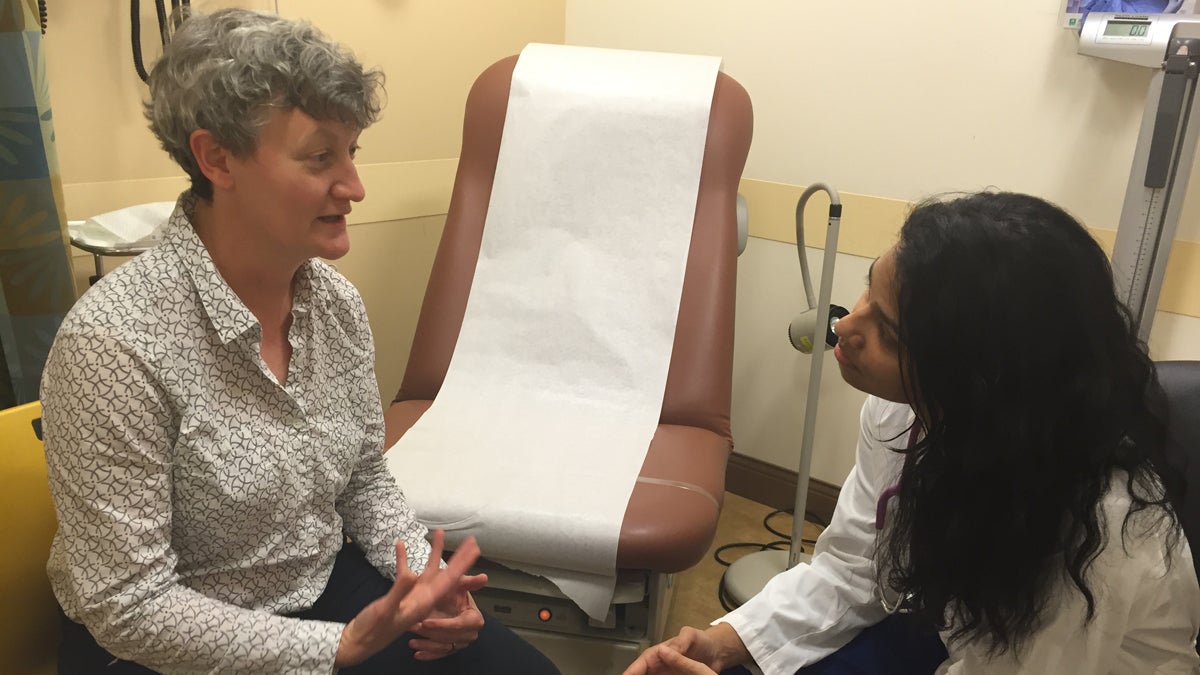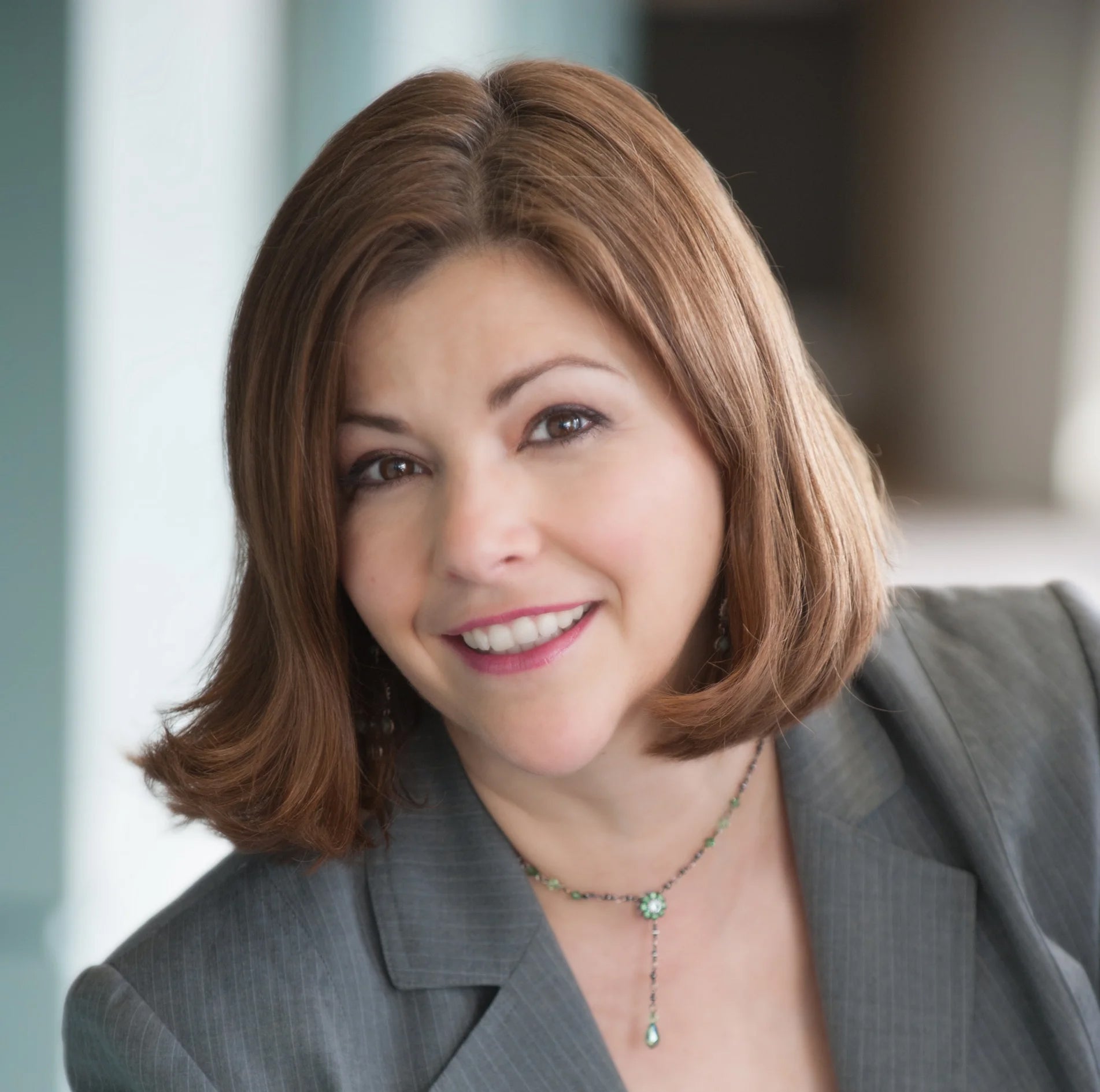Doctors asking about domestic violence is important, but daunting
Listen
Physician and Robert Wood Johnson fellow Anita Ravi (left) with Dr. Amanda Harris at the Institute for Family Health's FQHC clinics in New York City. (Courtesy of Anita Ravi)
Doctors are certainly used to bringing up uncomfortable topics – they ask us about all kinds of very private things; sex, drugs, and how much we weigh.
Chances are, your doctor also asked you if you feel safe at home, or in your relationship, during a recent visit.
“Do you feel safe at home?”
It can feel like a strange question to be asked when you’ve come in because you’re having chest pain, or because you’ve cut your finger.
But, doctors are supposed to ask – because this visit could be a brief window of opportunity to connect a victim to resources. Domestic violence has a major impact on people’s health.
“There’s heightened risk for everything from heart disease to asthma to mood disorders, and this is life-long prevalence for people who are victims,” said Marcella Slick. She heads an initiative at Lutheran Settlement House in Philadelphia which places domestic violence counselors directly in hospitals.
A lot of doctors agree that this is a really important topic to bring up – but it can get pretty daunting.
“How do you do that in a timely fashion, and in a way that’s sensitive, and doesn’t seem like it’s part of a script, how do you do it and have something to refer them to?” wondered Whitney Cabey, an emergency room physician. She’s currently on a Robert Wood Johnson fellowship researching the role of social services in the ER setting.
I sat down with Cabey and three other Robert Wood Johnson fellows to talk about domestic violence screening, and they said they are still getting used to digging into this complex issue.
“I actually don’t ask my patients this question very much,” said Anna Morgan, a primary care provider in a clinic that serves mostly Mexican immigrants.
“I’m sure I have missed many patients who have been in violent situations – and if I think back to why I didn’t ask, it’s twofold, there’s a limited amount of time, and many of the patients are really chronically ill,” she explained.
Having domestic violence broadly recognized as a public health issue is a fairly new concept.
The Institute of Medicine recommended screening for women in 2011, the U.S. Department of Health and Human Services followed suit. Two years later, the U.S. Preventive Services Task Force called on clinicians to screen women for partner violence.
So since then, doctors have been refining their techniques on delving into this issue.
Family physician Anita Ravi makes sure she explains that she is not singling a patient out. “I always say ‘domestic violence is a common health issue that we can help people with, and connect them to resources, so I always ask all of my patients,'” she explained.
It’s also important to ask with sincerity.
“I think when you read off a script I can definitely tell patients are like what the heck is he doing?” said Krisda Chaiyachati, a primary care provider at the Philadelphia VA. He usually asks about domestic violence somewhere in the middle of a visit, so, some trust has been established, but the patient’s eyes haven’t glazed over yet:
“I have to ask questions for six to 10 things, depending on the patient: their depression, their domestic violence, their homelessness, and these are all important questions, but I can tell the patient is like ‘why are you asking me all of these questions?'”
Chayachati doesn’t ask every patient about domestic violence. He looks for red flags, such as bruises, or black eyes. Several physicians told me they rely on their gut instinct, looking for clues that something else is wrong.
In the fast-paced ER environment, Whitney Cabey often focuses on high-risk patients. “My teens, my moms, women I can see have been in the ED multiple times, and their stories don’t make sense with the injuries they have.”
And then, there’s another big issue – what happens if you ask, and the patient says ‘yes, there is violence in my home, and I don’t feel safe?’
“It can turn a 20-minute visit into a two hour visit,” said Cabey.
“Sometimes I do these screenings and I don’t get follow-up on it,” said Chaiyachati. “So I don’t know what happened to this referral I have done, and a lot of the times, these patients – I lose them.”
When physicians don’t have immediate follow-up available for patients who are victims of domestic violence – if they might be sending them back into a dangerous situation, with suggestions to call a social worker – is it even worth asking?
“With the really small time that health professionals have with their patients they don’t want to uncover a giant can of worms that they don’t have time to deal with,” said Marcella Slick. She added that not having the right resources impacts screening numbers.
Her organization had an in-house domestic violence counselor at one Philadelphia hospital for four years, and averaged 176 referrals per year to that counselor. Then, the organization lost funding for one year, they didn’t have a person in the building, but the organization remained the main go-to place for referrals — and they got nine for that whole year.
Marcella Slick says many victims will deny being abused in the first place – because of fear and shame. But, she says, just asking the question plants a little seed in their mind – that the abuse is wrong, that there’s a way out, and that hospitals and doctor’s offices are safe places, where they can turn.
WHYY is your source for fact-based, in-depth journalism and information. As a nonprofit organization, we rely on financial support from readers like you. Please give today.




